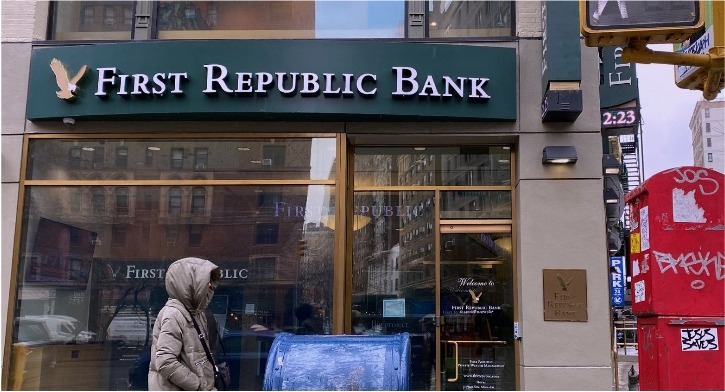
U.S. banks injected $30 billion in deposits into First Republic Bank (FRC.N) on Thursday, in an effort to rescue the lender caught up in a widening crisis triggered by the collapse of two other mid-size U.S. lenders over the past week.
The crisis began when Silicon Valley Bank collapsed last week due to bond-related losses that piled up when interest rates surged last year, leading to concerns about the wider banking system. The market turmoil had quickly ensnared Swiss lender Credit Suisse (CSGN.S), forcing it to borrow up to $54 billion from Switzerland’s central bank to shore up liquidity.
By Thursday afternoon, the spotlight had shifted back to the United States as big banks led an effort to prop up support for First Republic, a regional lender whose shares had tumbled 70% in the last nine trading sessions.
Some of the biggest U.S. banking names including JPMorgan Chase & Co (JPM.N), Citigroup Inc (C.N), Bank of America Corp (BAC.N), Wells Fargo & Co (WFC.N), Goldman Sachs (GS.N) and Morgan Stanley (MS.N) were involved in the rescue, according to a statement from the banks.
The move was seen as an attempt to prevent the contagion from spreading further and causing a broader financial crisis. It was also seen as a sign of confidence in the banking system and its ability to withstand the turmoil.
The situation raised questions about the health of the banking system and the risks associated with the proliferation of high-risk financial products. Some analysts suggested that the collapse of Silicon Valley Bank and other smaller lenders could be just the tip of the iceberg, and that other banks could be in trouble if interest rates continue to rise.
The Federal Reserve responded to the crisis by lowering interest rates and increasing liquidity in the financial system, but it remains to be seen whether these measures will be enough to prevent a wider crisis.
The situation also highlighted the interconnectedness of the global financial system and the potential for contagion to spread rapidly across borders. The collapse of a mid-size lender in Silicon Valley was able to trigger a crisis that quickly spread to Switzerland and the United States, highlighting the need for greater international cooperation and coordination in the regulation of the financial system.
The rescue of First Republic Bank was welcomed by investors, who saw it as a sign that the banking system was strong enough to weather the storm. However, concerns remained about the wider implications of the crisis and the potential for further fallout.
The crisis also raised questions about the role of regulators and the need for more effective oversight of the banking system. Some analysts suggested that the collapse of Silicon Valley Bank could have been prevented if regulators had been more vigilant in monitoring the lender’s activities and exposure to high-risk financial products.
The crisis highlighted the fragility of the global financial system and the need for greater caution and oversight in the management of financial risk. The rescue of First Republic Bank may have prevented a wider crisis, but the risks and challenges facing the banking system remain a cause for concern.
